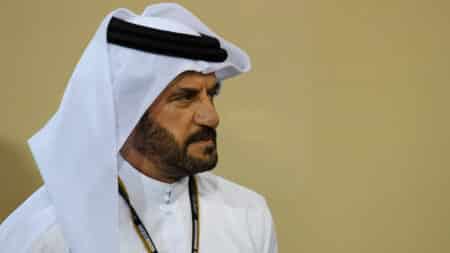
Prost laments Renault’s ‘sad’ F1 exit: ‘It’ll be difficult to come back’
Alain Prost has given his view on Renault exiting F1 as an engine manufacturer
In the last few days it’s barely been possible to log in without encountering news of the latest Ferrari firing.
Strategy chief Neil Martin is the latest casualty, following on from engineering chief Pat Fry, chief designer Nicholas Tombazis and tyre engineer Hirohide Hamashima the previous week. As things stand, in one season the team has lost one president, two team principals, the engine chief, engineering chief, chief designer, chief strategist and chief tyre engineer. That’s got to be a record, even for Ferrari.
With this background it’s interesting to reflect upon Pat Symonds’ descriptions of Williams’ competitive turnaround in 2014. Off the back of a disastrous 2013 during which only five points were scored with an uncompetitive and unreliable car, Williams took third in the 2014 constructors championship under its first full season of Symonds’ technical leadership. Remarkably, it was all done with pretty much the same staff.
“It’s a really good group,” said Symonds. “It’s 95% the same as last year but doing things better and not having to look over their shoulder all the time. I have a group of people working getting on for the way we had of working at Renault during the glory days. The people just enjoy working together, they’re honest to each other, they don’t blame each other but just get on and really go for it. Some of it is quite stunning. They are really competent people but they had no-one telling them what to do and they just… they’d lost that focus on car performance. It was all about department performance rather than bringing it all together and saying this is what we need to do to make the racing car go fast rather than, say, getting the best number in the wind tunnel.”
As the competitive performance falls off, so there is a tendency for problems to spiral downwards within a team. People get fearful and defensive, try to make it apparent that the problems do not lie with them but elsewhere in the organisation – and competition and points-scoring between departments and between people within departments becomes rife. Co-operation and flexibility goes out of the window – and so performance suffers yet further. It was just such a process that Symonds interrupted, removing the threat of imminent firings, getting everyone to understand the new regime wasn’t going to be about apportioning blame but moving forwards as a group.
Marshalling high calibre, competitive people towards the best result for the whole group is a difficult thing to do – and probably the most valuable core skill that men like Pat Symonds possess. Top engineers in their own right, what marks them out as exceptional is their ability to get gifted technical staff to follow in their wake for the benefit of the group rather than the individuals within it. In this, Symonds is in a pretty small group that is populated also by Ross Brawn and Mercedes engine chief Andy Cowell.
The only time that Ferrari has really worked has been when the high management has been kept out of the day-to-day operational running, thereby keeping the fear and the resultant in-fighting at bay. Ross Brawn and Jean Todt used to perform this function there in holding back di Montezemolo’s interference. Ironically Montezemolo himself used to perform the same function there in the ‘70s in tempering Enzo’s whims. It isn’t that senior management is stupid; it’s simply that with its necessarily broad-brush perspective it cannot have the intricate detail necessary to understand the many mechanisms at play in keeping all the plates spinning. Especially in teams of 800 people.
With a Brawn or a Symonds doing that job, senior management can concentrate on the bigger, long-term issues that keep the whole thing fuelled. If everyone’s really on the ball, a team can hover atop this virtuous circle for several seasons before the process of entropy begins to break it all up. Similarly, it usually takes several seasons for it all to wind down from dominance, to mere competitiveness to mediocrity. Ferrari has been going through that process since Brawn and Todt left eight years ago and in 2014 finally sunk into mediocrity, and it’s been this that has triggered the mass firings.
But now that they have happened, there are a couple of key questions. Can the remaining technical boss James Allison inspire and coral the troops like a latter day Ross Brawn – as well as fulfil his role as technical director? Secondly, if and when James is able to demonstrate that he has the team on a strong improvement curve, can the senior management of Sergio Marchionne and Maurizio Arrivabene be disciplined enough to stand back to leave him to do that job?

Alain Prost has given his view on Renault exiting F1 as an engine manufacturer

Mark Hughes weighs up an exceptional 2025 rookie class, dissecting four contrasting debut seasons to reveal who truly stood out the most

Mohammed Ben Sulayem's has now been re-elected as FIA president, after a controversial first term. But how did he become the first non-European president in the FIA's history?

Cadillac is in a race against time to get its new F1 car ready for 2026 – sim driver Pietro Fittipaldi explains how it's running in the virtual world first